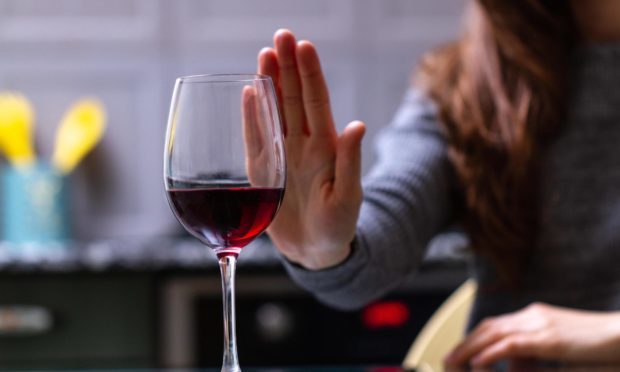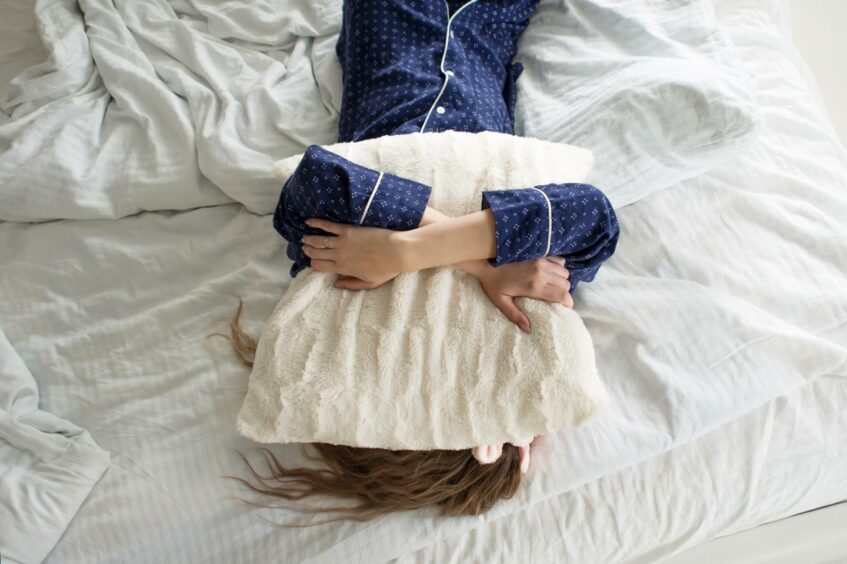It seems for Scotland, alcohol is a hard habit to break. Here, Clare Johnston explores the cultural norms, the slowly changing attitudes, and the benefits of cutting back.
Whether it’s a celebration, an evening with friends, or simply the transition from working day to evening, alcohol is so often the thing that’s reached for – whatever the occasion.
But our drinking culture in Scotland has long meant we’ve ranked highly on the lists of countries with the highest alcohol consumption.
And although there was the introduction of minimum unit pricing in 2018, public health experts and campaigners say there is still a long way to go.
The introduction of minimum unit pricing has since been credited with starting to move the dial, with an overall reduction in Scottish alcohol-related deaths in 2019 by 10% compared with the previous year.
However, statistics from the National Records of Scotland showed a 17% rise in alcohol-related deaths in 2020 rising from 1,020 in 2019, to 1,190 in 2020.
In the NHS Tayside area in 2019 there were 74 alcohol-specific deaths, down from 88 in the previous year.
In Dundee the numbers dropped from 36 to 30 – the lowest number of alcohol deaths in the city for five years. There were 21 deaths in Angus in 2019 (down from 22) and 23 in Perth and Kinross (down from 30).
But with resolve thoroughly tested over the pandemic, the prospect of abstaining from alcohol in January – traditionally the month for cutting back on or cutting out booze completely – could be less attractive than in previous years.
Can Dry January have longer-term benefits?
Alison Douglas, chief executive of the charity Alcohol Focus Scotland which works to prevent and reduce the harm caused by alcohol, says evidence suggests that a sober start to the year can have a lasting, positive impact on drinking habits.
She said: “Millions of people get involved with Dry January and I think it’s difficult to generalise. Some people will give themselves permission to really go for it over Christmas and New Year with the thought that, ‘Oh well, I’m going to dry out during January.’
“For some people that may mean that they’re also giving themselves permission to start drinking heavily again in February. But actually, interestingly, the research that’s been done suggests that for a lot of people Dry January can actually provoke a longer term change in their drinking patterns.
“That’s really what we want to see because nearly a quarter of us in Scotland are regularly drinking over the chief medical officer’s low risk drinking guidelines – that’s an awful lot of us who are putting our health and wellbeing at risk and potentially having negative impacts on family members, friends or even work colleagues.
“So anything that is enabling people to reassess their drinking and start to cut down in a more long term way is beneficial. But for some people there is that risk of, ‘Oh well, if I dry out for a month [it means] I haven’t got an alcohol problem. I can go back to binge drinking or regularly drinking too much’.
“So for me it’s about encouraging people to look at the low risk drinking guidelines, think about their own drinking and assess, what’s right for me? How can I manage my risk and learn to have a good time without necessarily relying on alcohol to lubricate it.”
What is problem drinking?
Alison says stereotypes around alcohol addiction can be unhelpful when there are significant numbers of people unaware they are at risk.
She said: “So many of us have a stereotype in our heads about what someone with a drink problem looks like and it’s all about ‘othering’. ‘It’s not me, it’s those people over there’. Whether our stereotype is it’s people who lost their job, lost their home who are out on the street or whether it’s people that we see in normal times out falling about on a Saturday night, we’re good at saying it’s someone else not us.
“But the truth is you don’t need to be drinking that much to be putting your health at risk. Fourteen units if you translate that into your preferred drink then that’s the sort of level that most people think of as low-level drinking.
“We need to be honest with ourselves and say whenever you feel compelled to have a drink, or you’re doing it as a matter of habit and routine, that should be a bit of warning sign. Ask yourself, ‘Is there another way I can relax or treat myself without automatically reaching for alcohol?”
How availability, accessibility and desirability all factor into our drinking habits
Marketing, the availability of alcohol and the movement – particularly during the pandemic – to drinking at home, have all contributed to Scotland’s over-dependence on drink, says Alison.
She explained: “As a nation for many decades we’ve had a problem with alcohol but it has got worse over recent times. The amount we consume has nearly doubled since the 1960s and so if we’re going to realise a change then we need to identify the environmental factors that drive those high rates of consumption and, if we think about what has happened over those 50 years, we drink far more at home.
“Three quarters of all the alcohol we consume is at home. Up until minimum unit pricing came into force, half of that alcohol sold from shops and supermarkets was under 50p per unit.
“We saw that explosion in at-home drinking fuelled by low cost alcohol. At the same time alcohol has been really heavily marketed to us as something that’s part of a good social life, that it’s a desirable and attractive thing to be consuming.”
She points to World Health Organisation (WHO) guidelines around measures to reduce alcohol-related harm.
“The WHO talks about increasing the price (which we’ve started to do in Scotland), and controlling how readily available alcohol is. We have a situation where we even have hairdressers licensed in Scotland. We’ve seen that creep of alcohol into so many aspects of our lives. We think we’re not affected by alcohol marketing, but the reality is we are.
“Whether it’s celebrities advertising drinks, or sponsorship of football teams, it’s all part of alcohol being seen as an integral part of our lives and those are the sort of things we need to be challenging as a country.”
But there is reason to believe younger generations are taking a different approach to alcohol, with a WHO study three years ago revealing teenage drinking in Scotland was down dramatically on the the previous decade.
The report on adolescent alcohol-related behaviour between 2002 and 2014, revealed weekly drinking among 15-year-olds in Scotland fell from 41% to 11% among girls and from 41% to 14% among boys.
What are the benefits of giving up or cutting back on booze?
The Drinkaware website is full of helpful advice on how to cut back on or cut out drinking, and highlights a number of short and long-term benefits.
The most immediate, and most obvious, is that you no longer have to deal with hangovers which are largely caused by dehydration, though alcohol can also cause digestive problems, low blood sugar and electrolyte imbalance along with sleep disturbance.
Alcohol is also a depressant which can alter the chemical balance in your brain, with multiple studies pointing to the link between alcohol intake and poorer mental health.
Those who cut back on or give up drinking also report having higher energy levels. While this may be down to improved sleep quality it could also relate to being better hydrated among other factors.
A standard pint of lager contains 180 calories, so it’s not hard to see how it all adds up. Reducing alcohol can often go hand in hand, provided the calories in beers, wines and spirits are not substituted by unhealthy snacks.
New breed of alcohol-free drinks makes it easier to cut back
Together with his business partner, Bill Garnock last year launched the alcohol-free spirit Feragaia, having identified an increasing demand in the UK and beyond for premium soft drinks.
The Fife-based firm has its products stocked in Harrods and is already exporting the drink, too. Bill, 30, says he is among a growing number who are turning to non-alcoholic drinks as a way of unwinding in a healthier way.
He explained: “I still drink alcohol, but I drink Feragaia Sunday, Monday, Tuesday, Wednesday, Thursday and, on the weekend, I will always have it at aperitif time but I might have a glass of wine with dinner.
“It’s about widening the goalposts of what drinking time is. I might have a beer with my meal, or a whisky at the end of the day, but if it’s six in the evening and dinner is not until another couple hours then I drink Feragaia where I might have had a gin and tonic.
“I still drink elderflower cordial but that’s a lunchtime drink. At the end of a long day I don’t want to have a drink that I associate with the daytime. I drink water to survive, or play sport, but there’s a significant time of day where you want to put your feet up and relax. You want something satisfying after a long day’s work.”
And in reducing his alcohol intake, Bill says he has noticed benefits.
He said: “The most immediate benefits are better sleep, I haven’t lost weight – I’m the same size I’ve always been – but the calorie intake of alcohol is pretty high so I have been able to maintain my weight. We don’t make big health claims, but the benefits [of cutting down on alcohol] are really what you’re not putting in your system.”













